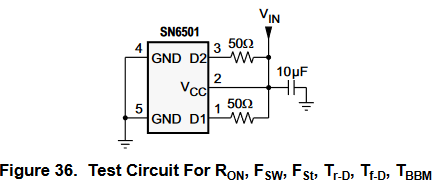Other Parts Discussed in Thread: SN6505B
Hello,
I'm currently having a issue with a circuit in which a SN6501 is used. It looks like that surge impulses on the AC-line can pass through the AC-filter, ACDC-converter, +5 V linear regulator and the SN6501 connected to this. At the moment of the surge, a extremely short voltage peak (maximum 1 us) of ~ 6 V can be seen on the 5 V rail. This is also the absolut maximum voltage rating of the SN6501. After this peak, it somehow increases its current consumption to ~ 400 mA and will fail, propably because of overheating.
As we are still looking for the root cause, I'm thinking about the internal components of the SN6501. Are there any clamping diodes that will get conductive in case of supply voltages above 5 V? Or could this device be affected by a latch-up effect due to this spike?
Thanks in advance,
Christian





